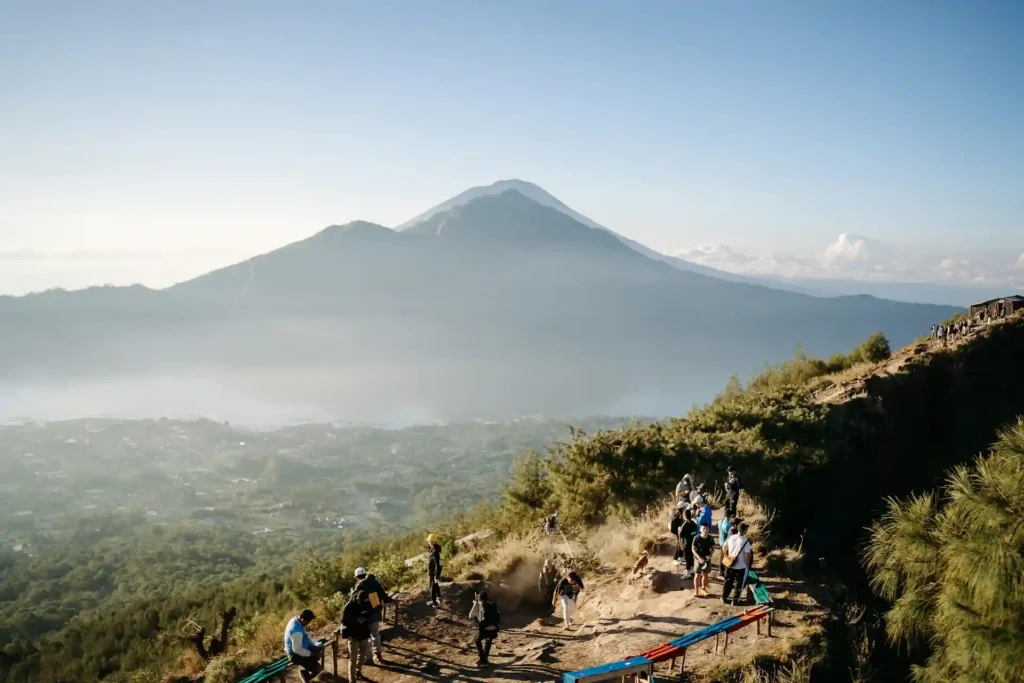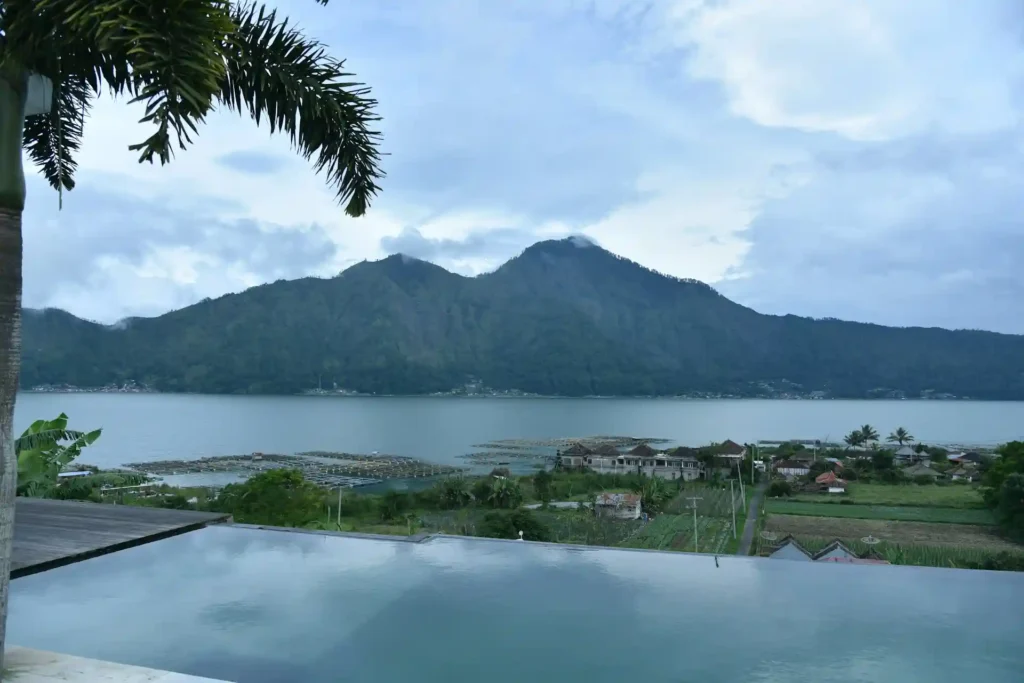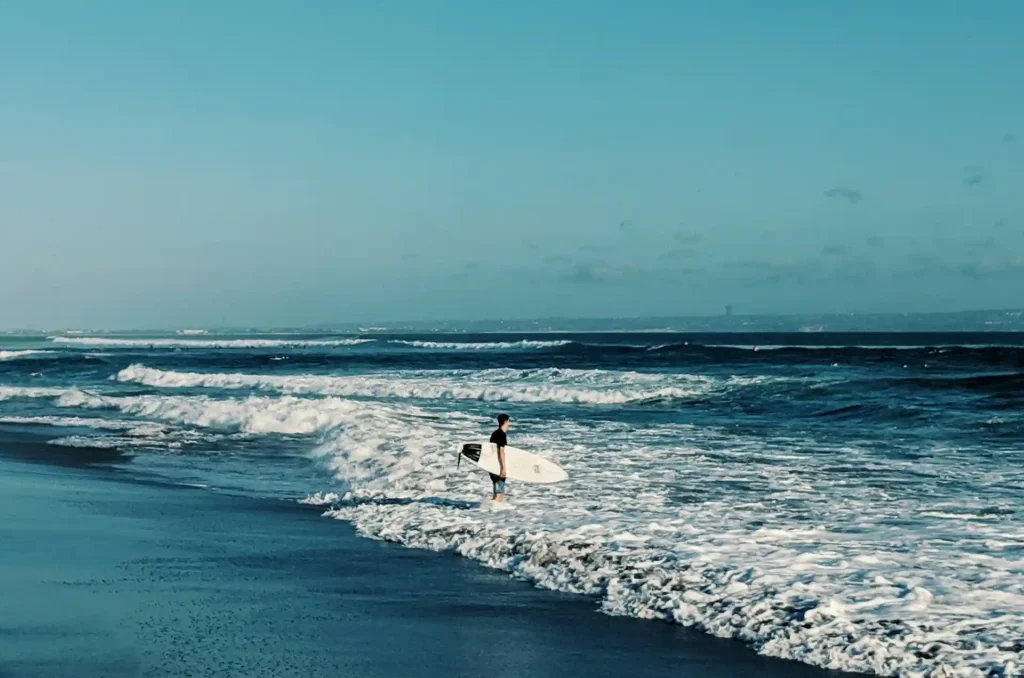The geography of Bali is a fascinating mix of towering volcanoes, lush highlands, terraced rice fields, and tropical coastlines. Although small in size, this Indonesian island offers remarkable diversity, both in landscape and climate. Understanding Bali geography helps travellers appreciate not only its beauty but also its cultural and ecological richness.
Bali sits at the heart of the Indonesian archipelago, between the islands of Java and Lombok. Its varied terrain shapes everything from local traditions to tourism experiences, creating a destination that feels both wild and welcoming.
The Island’s Location in the Indonesian Archipelago
The island is part of the Lesser Sunda Islands, a chain that stretches eastward from Java. It lies just south of the equator and between the Indian and Pacific Oceans. Its position along the Wallace Line makes it a transition zone between Asian and Australasian flora and fauna, contributing to incredible biodiversity.
As one of more than 17,000 islands in Indonesia, its Bali geography has been shaped by millions of years of volcanic and tectonic activity. The result is a landscape rich in natural features, from high peaks to coral-lined shores.
The Highlands and Volcanoes
This region offers cooler temperatures, scenic landscapes, and a glimpse into the island’s spiritual and agricultural heart.
Mount Agung: The Sacred Peak
The highest point in the island is Mount Agung, rising 3,031 metres above sea level. Known locally as the “Mother Mountain”, Mount Agung is considered sacred and plays a central role in Balinese Hindu beliefs. Many temples are aligned with this peak, including the island’s largest, Pura Besakih.
Mount Batur and Its Caldera
To the northwest lies Mount Batur, an active volcano surrounded by a wide caldera and Lake Batur. The mountain is a popular destination for sunrise treks that reward hikers with breathtaking views of the surrounding landscape. The volcanic soil here is incredibly fertile, supporting lush vegetation and local farming.
Central Highlands
Between the northern and southern coasts lie Bali’s Central Highlands, where the air is cooler and the scenery greener. This area is home to Mount Batukaru, tropical forests, and scenic rice terraces. Traditional villages here, such as those near Jatiluwih, preserve the ancient subak irrigation system recognised by UNESCO.

Source: Unsplash
Lakes and Rivers
Bali’s highlands are dotted with freshwater lakes, most of which are remnants of volcanic activity. The main ones include Lake Bratan, Lake Buyan, Lake Tamblingan, and Lake Batur.
Lake Bratan, in particular, is famous for Ulun Danu Bratan Temple, a water temple that appears to float on the surface of the lake. These lakes are vital for irrigation and play an important role in the island’s agriculture and spiritual practices.
Numerous rivers flow from the central mountains toward the sea, carving deep valleys and feeding Bali’s lush vegetation. Among them are the Ayung and Petanu rivers, which provide scenic backdrops for rafting and nature tours.

Source: Unsplash
The Coastal Regions
West Coast: Surf and Sunsets
The west coast of Bali features wide stretches of golden sand and some of the island’s best surfing spots. Areas like Canggu, Seminyak, and Echo Beach are popular for their laid-back atmosphere and vibrant social scene. Temples such as Tanah Lot, built on rocky outcrops, add to the region’s dramatic charm.
East Coast: Volcanic Beauty
In contrast, the East Coast is defined by black sand beaches formed from volcanic lava. It is home to traditional fishing villages and quieter resorts. Destinations such as Amed and Tulamben are well known for diving and snorkelling, with colourful coral reefs just offshore.
Bukit Peninsula: Cliffs and White Sands
At Bali’s southern tip lies the Bukit Peninsula, an elevated, rocky region surrounded by the Indian Ocean. This area hosts stunning cliffs, white sand beaches, and the iconic Uluwatu Temple. With its drier climate, the Bukit offers excellent weather during Bali’s rainy season. Resorts in Nusa Dua and Jimbaran provide luxurious seaside experiences, while surfers flock to Padang Padang and Bingin Beach.

Source: Unsplash
Ubud and the Heart of Bali
The town of Ubud sits in the island’s central region, surrounded by lush hills and rice terraces. Often called Bali’s cultural heart, it offers a landscape of dense jungle, winding rivers, and sacred temples. The famous Tegallalang Rice Terraces demonstrate the traditional Balinese harmony between nature, community, and spirituality.
The Surrounding Islands
Nusa Islands
Off Bali’s southeast coast are the Nusa Islands, which include Nusa Penida, Nusa Lembongan, and Nusa Ceningan. These smaller islands feature rugged cliffs, turquoise waters, and some of the most dramatic seascapes in Indonesia. Nusa Penida is famous for Kelingking Beach and Angel’s Billabong. Nusa Lembongan offers peaceful beaches, mangrove forests, and a relaxed island atmosphere.
Lombok and the Gili Islands
Across the Lombok Strait is Lombok Island, home to Mount Rinjani, Indonesia’s second-highest volcano. Close to Lombok’s coast are the Gili Islands: Trawangan, Meno, and Air. Known for their coral reefs, white sand beaches, and laid-back lifestyle, these islands are perfect for short getaways. They are easily reached from Bali by fast boat, making them a popular choice for travellers seeking adventure or relaxation.
Climate and Natural Resources
Bali has a tropical climate, with warm temperatures year-round. The island experiences two main seasons: dry (April to October) and rainy (November to March). Coastal areas are hotter, while the highlands are cooler and often misty.
The volcanic soil provides excellent fertility, supporting rice, coffee, fruits, and flowers. The subak irrigation system sustains Bali’s landscape by channeling water from lakes and rivers through a network of canals that nourish its terraced rice fields. This balance of natural and human design is central to Bali’s identity.
Final Thoughts
The island’s Bali geography is a perfect blend of mountains, forests, and the sea. Its volcanic peaks, fertile plains, and diverse coastlines create a landscape that is both beautiful and meaningful to its people. Every region tells a different story, from the spiritual slopes of Mount Agung to the tranquil lakes and vibrant coral reefs.
Exploring with an understanding of its Bali geography helps you see beyond the surface. You begin to appreciate why the island feels alive, shaped by nature and nurtured by culture.If this guide has inspired you to explore more, share it with fellow travellers or start planning your next adventure. For a smooth and comfortable journey around the island, trust Ketut Bagong Rental to provide reliable transport and make your Bali experience effortless and unforgettable.
